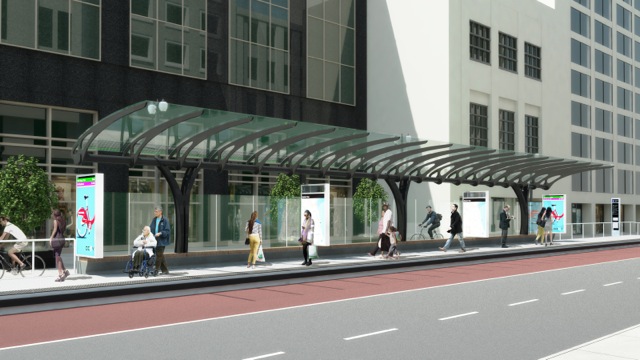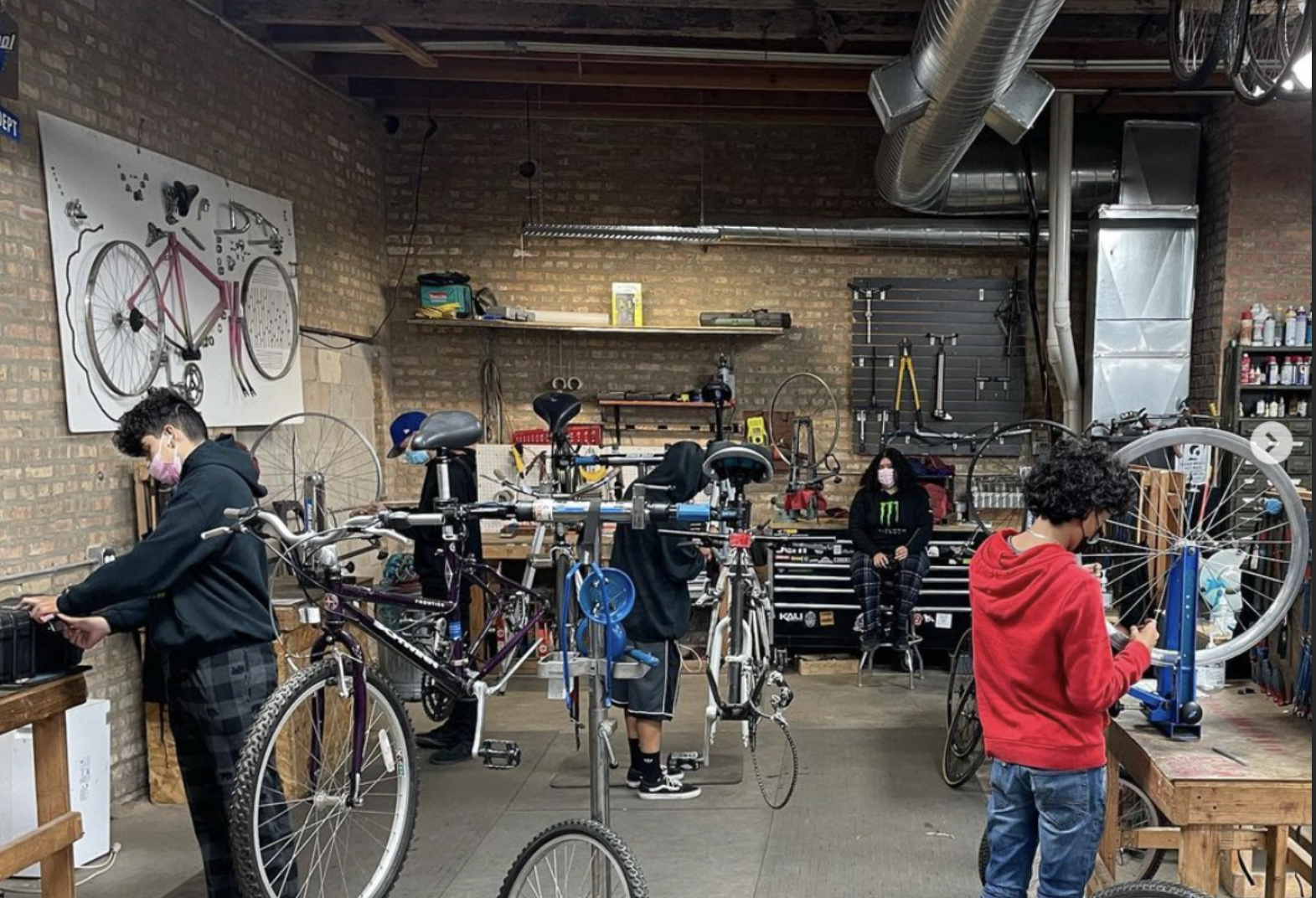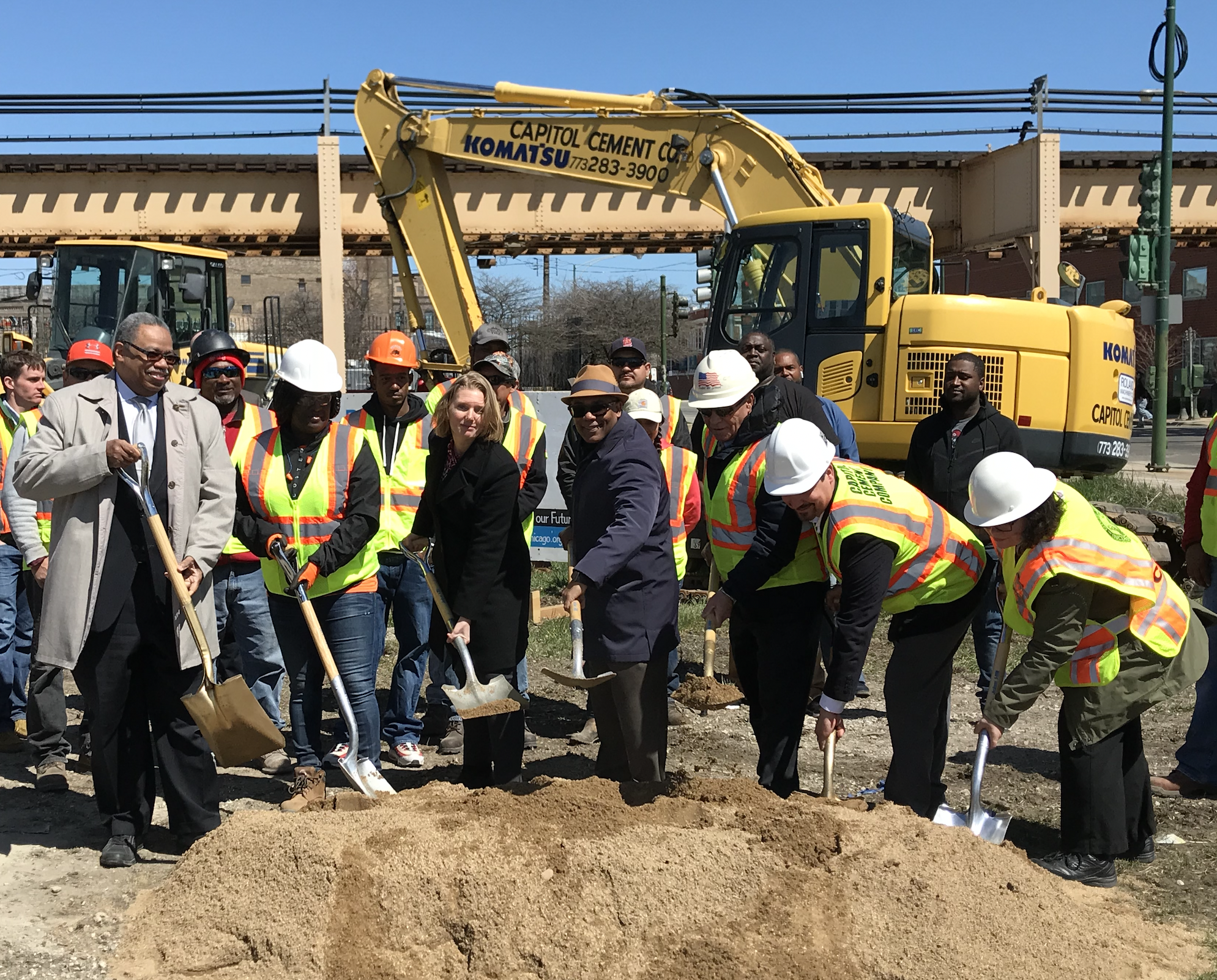CDOT Is Finally Moving Forward With the Loop BRT Project
5:47 PM CDT on September 29, 2014
Last July, City Hall broke the news that the start of construction on the $32.5 million Central Loop BRT project was being delayed from this fall until at least next year, if not later. That spurred concern that the project might be in jeopardy, or that it might be a low priority for Mayor Emanuel. However, the Chicago Department of Transportation today announced it has launched the bidding process for BRT system, as well as the $43 million Union Station Transit Center, and the $75 million Washington/Wabash CTA station.
All three projects will break ground by March 31, according to CDOT Commissioner Rebekah Scheinfeld. The transit center and BRT route will be in operation by the end of 2015, and the station will open in 2016, she said. “Any one of these would be a big deal,” she said. “But it’s exciting for downtown, the neighborhoods, and the region that we’re working on all three – there are synergies between these projects.”
Walter Hook, CEO of the Institute for Transportation and Development Policy, which is consulting on Chicago’s Loop and Ashland BRT projects, previously speculated that Mayor Emanuel had pushed back these initiatives for political reasons. It seems likely that the Loop BRT construction work, and ensuing traffic headaches, won’t begin until after the February 24 election.
The Loop BRT system will feature dedicated bus lanes on Canal, Clinton, Washington and Madison, running between Union Station and Michigan Avenue, plus several other time-saving features. CDOT predicts these will make a westbound trip across the Loop 15 percent shorter, and an eastbound trip 25 percent shorter.
Eight extra-long stations, averaging 90 feet in length, will be built on Washington (at Franklin, LaSalle, Clark, and State) and on Madison (at Franklin, LaSalle, Dearborn, and State). The stations will be long enough to accommodate two articulated buses at a time.
Seven existing stops will be eliminated on Madison (Clark, Wells, and Wacker), Canal (Washington, Monroe, and Van Buren), and Clinton (Van Buren). Having stops roughly every other block, instead of every block, will definitely speed things up.
The buses will get a type of traffic signal prioritization at seven intersections, most of which already give pedestrians a head start on motor vehicle traffic. When pedestrians get the early walk signal, a special signal will also give buses a head start over cars. Since buses won’t be turning right at these intersections, there shouldn’t be conflicts with pedestrians.
All stations will feature level boarding, which will eliminate the time needed to make buses “kneel” for seniors and people with disabilities. However, for starters, only the Madison/Dearborn station will feature prepaid boarding.
“We’re piloting prepaid boarding at this one high-volume station, where the benefits of reduced dwell time will be most evident,” Scheinfeld said. “We want to make sure the costs and benefits are clear before we go full scale.” CDOT and the CTA are currently considering a few different methods for the prepayment system, including Latin American-style fare gates and New York-style onboard ticket checks.
For the time being, the dedicated bus lanes will not have camera enforcement, since this would require state legislation, according to CDOT spokesman Pete Scales. However, the lanes will be paved with red-tinted concrete, and abundant signage should make it clear that they are intended for buses only, he said.
“We’re going to work with other agencies and stakeholders along the route to make sure that the lanes are enforced and that people know how to use the street,” Scales said. Loading zones along Washington and Madison will be eliminated and deliveries will be made via north-south alleys, Scales said.
Washington will feature island bus stations, with a protected bike lane located between the station and the curb. An existing non-buffered bike lane on Madison will be replaced with a protected lane on Randolph. Scales said the bike lanes will also be tinted green and will have delineators -- likely flexible posts -- in locations where there are no bus stations, which should discourage motorists from driving and parking in them.
At least two mixed traffic lanes will be maintained on all sections of the route. Right turns for motorists will be banned at four locations: Washington onto LaSalle, Madison onto Dearborn, Madison onto Wacker and Jackson onto Canal. At other intersections, drivers will be permitted to merge across the bus lane and into right turn bays. To avoid conflicts between right-turning motorists and cyclists in the Washington PBL, each mode will get a dedicated signal phase, similar to how things currently work on the Dearborn protected lanes.
Scheinfeld said she’s excited about the final station shelter design. “They have a very open feel, with a lot of space for seating, information panels and bus tracker displays,” she said. Merchants had expressed concerns that the stations would obscure their storefronts. To address this, the shelters are mostly transparent, and advertising panels will be perpendicular to the street.
Notably, the shelters shown in the current renderings look nothing like that shown in previous renderings, which were based on the winner of a station design contest. Instead of enclosed structures, the new shelters are essentially 14-foot-tall canopies with a glass rear wall that stops several feet before the roof. It appears that, in the interest of making the stations unattractive to loiterers, the city ended up with a design that won’t offer much protection from blowing rain and snow.
But that’s a fairly minor criticism. After years of planning, a reasonably robust BRT system finally appears to be moving forward in Chicago.
Active Transportation Alliance director Ron Burke summed up the situation nicely in a statement. “With increasing demand to move around the Loop and limited space, the only way to reduce gridlock and make it easier to get around is by making riding transit, biking and walking more safe and convenient."
In addition to editing Streetsblog Chicago, John writes about transportation and other topics for additional local publications. A Chicagoan since 1989, he enjoys exploring the city on foot, bike, bus, and 'L' train.
Read More:
Stay in touch
Sign up for our free newsletter
More from Streetsblog Chicago
Today’s Headlines for Tuesday, April 23
Communities United: Reports of Bikes N’ Roses’ death have been greatly exaggerated
According to the nonprofit shop's parent organization, BNR has paused its retail component, but is still doing after-school programming and looking for new staff.
Pressure is mounting to replace embattled CTA President Dorval Carter
Here's a look at what elected officials and other media outlets have said about the issue recently.
Service boost means BNSF Line will get Metra’s first-ever across-the-board weekend schedule, starting April 29
In addition, Halsted Street station will get weekend service, and Downers Grove's Fairview stop will become an off-peak stop.





